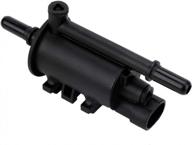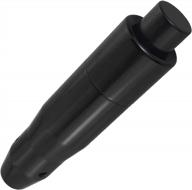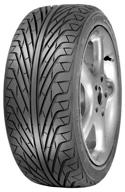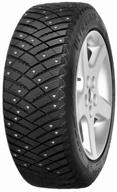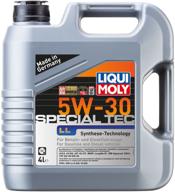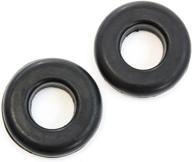Problems with your Vehicle's Exhaust System
A properly functioning exhaust system is important for any vehicle. Not only does the exhaust pipe route dangerous exhaust gases away from the interior of your car, it also helps optimize engine performance. Unfortunately, with age and use, exhaust systems can develop issues. Here are some of the most common exhaust problems car owners encounter:
Top products in 🌫️ Exhaust & Emissions


28 Review

Leaks
Exhaust leaks allow dangerous carbon monoxide to enter the passenger compartment. They also cause a loss of engine power. Listen for hissing sounds coming from the exhaust system and look for rust/stains around exhaust joints. Potential leak points include:
- Exhaust manifold gasket
- Exhaust pipe connections
- Muffler/Catalytic converter connections
- Tailpipe hangers
Noises
Unusual exhaust sounds indicate problems. Here are some common noises and potential causes:
| Sound | Possible Cause |
|---|---|
| Rattling | Broken or loose exhaust components |
| Hissing | Exhaust leak |
| Loud droning | Damaged muffler/resonator |
Backpressure Issues
Restricted exhaust prevents dangerous gases from properly evacuating, reducing engine efficiency. Causes include:
- Clogged catalytic converter
- Collapsed/crimped pipes
- Excessive rust buildup
Symptoms include power loss, poor acceleration, and engine overheating.
Component Failure
With time, vibration, and exposure to weather, exhaust parts wear out. Watch for:
- Rust/corrosion on mufflers, pipes, hangers
- Cracked exhaust manifold
- Damaged catalytic converter internals
Replacing individual exhaust components as needed can maximize the life of your system. DIY is possible on some repairs, but having an exhaust shop diagnose issues is recommended.
Drive safely and pay attention to any exhaust noises or vibrations. Addressing problems early preserves engine performance and prevents potentially dangerous carbon monoxide exposure.
Symptoms that Indicate Exhaust System Problems
Because the exhaust system plays a critical role in engine performance and reducing emissions, it's important to address any potential problems promptly. Here are some key symptoms that may indicate an underlying issue with your vehicle's exhaust:
Unusual Noises
Strange sounds coming from the exhaust system should never be ignored. For example:
- Rattling noises can signal a loose pipe or broken component like a heat shield inside the muffler.
- Hissing indicates gas escaping through a leak in an exhaust joint or cracked pipe.
- Loud droning or booming suggests internal muffler damage.
I recently helped a customer diagnose a loud rattling noise coming from under his truck when accelerating. It turned out his catalytic converter heat shield had corroded and broken loose. Replacing it solved the noise.
Exhaust Fumes in Cabin
Any smells of exhaust fumes in the interior likely mean there’s a leak. Cracks or loose connections allow dangerous gases to enter the cabin. Don't ignore small whiffs of odor - leaks tend to worsen over time. Have the entire system inspected immediately if fumes are present.
Check Engine Light
Modern vehicles have O2 sensors that monitor exhaust efficiency. The check engine light may illuminate if:
- The catalytic converter isn't processing emissions properly due to damage.
- An O2 sensor itself is malfunctioning.
- There are leaks upstream of the sensor.
Scan the code to pinpoint the specific exhaust-related error.
Another interesting products
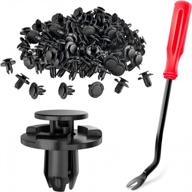

33 Review

Visible Damage
Doing a quick visual inspection for any obvious exhaust issues periodically is smart. Look for:
- Rust around joints, hangers or other connections
- Dents, scrapes or damage to any pipes
- Muffler cover damage or visible rust
Catching small holes or component wear early prevents more costly repairs later on. Listen to what your exhaust is telling you and don't hesitate to have any potential issues checked out by a professional mechanic.
Types of Exhaust System Components
A vehicle's exhaust system contains several components that route exhaust gases away from the engine and reduce emissions. Here are some of the main parts commonly found in exhaust systems:
Similar products
Exhaust Manifold
The exhaust manifold collects exhaust gases from the engine cylinders and combines them into one pipe. There are two main types:
- Single exhaust manifold - Used on inline engines with one exhaust port
- Dual exhaust manifold - Found on V-engines with two banks of cylinders
These are attached to the engine cylinder head and are often made of cast iron or stainless steel.
Catalytic Converter
This component uses a chemical process to convert toxic gases like carbon monoxide into safer emissions. Catalytic converters contain a coated honeycomb substrate inside a stainless steel housing. Two common types are:
- Two-way converter - Reduces hydrocarbon and carbon monoxide
- Three-way converter - Also reduces nitrogen oxide
Muffler
The muffler dampens exhaust noise through cancellation and absorption techniques. Inside, soundwaves pass through perforated tubes and baffles which quiet them. Mufflers are typically made of aluminized or stainless steel.
Resonator
Similar to a muffler, resonators also help reduce noise but use chambers and sound waves rather than baffles. They are often found after the catalytic converter.
Pipes and Connectors
Steel or aluminum piping connects all the exhaust components. Stainless steel flex pipes allow movement. Exhaust joints and gaskets seal connections to prevent leaks.
Understanding the different exhaust parts helps identify issues when problems arise. Paying attention to unusual noises or leaks early allows for minor repairs and prevents bigger headaches down the road.
Exhaust Replacement Parts Overview
If you've noticed issues with your vehicle's exhaust system, replacing worn or damaged components can restore proper performance. Here's an overview of some common replacement parts:
Gaskets
Exhaust leaks are often caused by deteriorated gaskets. Some key gaskets include:
- Exhaust manifold gaskets - seal the connection between manifold and engine
- Exhaust donut gaskets - seal piping joints
- Catalytic converter gaskets - seal converter to exhaust pipes
Replacing dried out, cracked gaskets will prevent exhaust leaks.
Oxygen Sensors
The O2 sensor monitors exhaust gases leaving the engine. Over time, they can fail triggering the check engine light. Replacing faulty sensors restores engine efficiency and reduces emissions.
Heat Shields
Heat shields protect components like fuel tanks, wiring, and the catalytic converter from excessive heat. If yours is rattling, corroded, or has holes, a new one will quiet vibrations.
Hangers
These rubber mounts isolate exhaust vibration from the vehicle body. Worn out hangers can cause rattling and misaligned pipes. Replacement hangers realign everything.
Mufflers & Resonators
Internal damage like ruptured baffles will cause loud drone or air leaks. Replacing a faulty muffler or resonator reduces noise.
Pipes & Tubing
Severe rust or physical damage requires replacing entire sections of exhaust pipe. Make sure to match size, shape, and material.
Only install manufacturer certified replacement parts to avoid premature failure. Proper repairs by an experienced exhaust shop will get your vehicle sounding and performing like new again.
The Benefits of Amazon Prime for Exhaust and Emissions Parts Buyers
For those who frequently purchase exhaust and emissions replacement parts for DIY repairs or auto shops, an Amazon Prime membership can be quite useful. Here are some of the key benefits Prime offers when buying exhaust components and other automotive supplies:
Free Two-Day Shipping
One of the biggest perks of Prime is free two-day shipping on millions of eligible items. That means you can get the muffler, oxygen sensor, or other exhaust part you need quickly without paying extra shipping fees. This allows you to complete repairs faster and get vehicles back on the road again.
Large Selection of Parts
You'll find a vast inventory of exhaust components like catalytic converters, pipes, and hangers on Amazon. All the major aftermarket brands are available for most makes and models. This makes it easy to locate the specific part that matches your vehicle.
Convenient Ordering
The Amazon mobile app allows you to order parts conveniently from your phone. Search for the exact part you need, compare options, check availability, and place the order, all on your phone. Parts show up at your doorstep in two days or less.
Additional Prime Benefits
Besides fast free shipping, a Prime membership includes access to Prime Video for downtime entertainment, Prime Music for listening while you work, and exclusive Prime Day deals. There are lots of useful perks bundled in.
For those regularly maintaining or repairing vehicle exhaust systems, a Prime membership can streamline ordering parts and supplies. The selection, fast shipping, and convenience make it a valuable asset for any auto repair shop or DIY mechanic.
What Are The Most Common Problems With Exhaust And Emissions Systems??
Based on the search results, here are some of the most common problems with exhaust and emissions systems:
- Rust: Rust is a common problem with exhaust systems that can cause corrosion and put you in harm's way.
- Exhaust leaks: Leaks can be caused by a loose or worn-out exhaust pipe or a crack in the exhaust manifold, and can lead to dangerous fumes leaking into the cabin.
- Blocked exhaust: A build-up of dirt, rust, or other debris can block the exhaust pipe, causing the engine to make an unfamiliar sound as it struggles to expel exhaust gases.
- Loose components: Loose brackets, a detached exhaust pipe, or a loose heat shield can cause rustling sounds while driving and lead to more damages to the vehicle.
- Reduced power: A clogged catalytic converter or muffler can cause reduced power when accelerating the vehicle.
- Unusual smells: Unusually strong exhaust smells or other strange smells can be symptoms of various automotive problems and should be dealt with as soon as possible.
It is important to get your exhaust system inspected regularly to prevent these problems from getting out of hand and causing severe damage.
What Are The Symptoms Of Exhaust System Problems??
Based on the search results, here are some symptoms of exhaust system problems:
- Unusual engine noises: Loud engine sounds, rattling, hissing, popping, or scraping sounds can be signs of exhaust system problems.
- Vibrations: If you feel unusual vibrations while driving, it could be due to a leak or blockage in the exhaust system.
- Decreased power and fuel efficiency: A clogged catalytic converter or muffler can cause reduced power when accelerating the vehicle, and can decrease fuel efficiency.
- Unusual smells: Unusually strong exhaust smells or other strange smells can be symptoms of various automotive problems and should be dealt with as soon as possible. The smell of exhaust in your vehicle is never a good sign, and it may be due to an exhaust leak.
- Check engine light: The check engine light can come on if your catalytic converter, mass airflow sensor, or oxygen sensor is failing. It will also come on if the air/fuel mixture in the engine and exhaust isn’t just right.
- Rust: Rust anywhere in the exhaust system can be dangerous and can corrode essential parts of your vehicle.
If you notice any of these symptoms, it is important to get your vehicle checked out by a qualified professional to prevent the problem from getting worse and causing severe damage.





